Monthly economic brief: June 2020
Provides a summary of latest key economic statistics, forecasts and analysis on the Scottish economy.
This document is part of a collection
Consumption
Physical distancing measures, alongside more fragile household finances and weakening consumer sentiment is impacting demand in the economy and overall saving and consumption patterns.
Consumer Sentiment
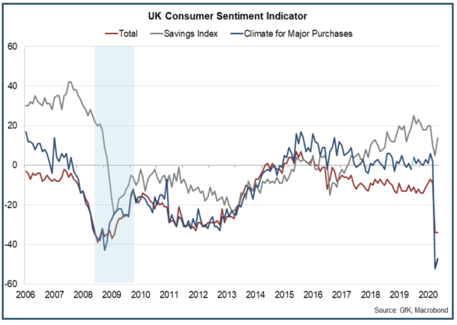
- UK consumer sentiment has fallen sharply since the end of March, reflecting weaker expectations about the performance of the economy and personal household finances.
- UK Consumer Sentiment in May remained low at -34 and is 5 points higher than its level during the financial crisis.
- Compared to April, households in May reported small improvements in economic and household financial expectations for the next 12 months and a pick-up in attitudes towards savings.
Consumer Spending
- Consumer spending data[11] showed a 36.5% fall in UK consumer spending over the year to April 2020 following a fall of 6% in March.
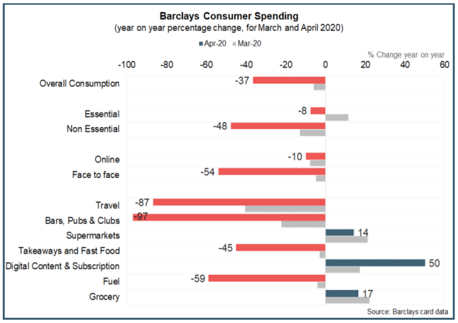
- Spending on essentials declined by 7.5% due to a 59% drop in fuel spend, while non-essential spending declined by 48% driven by large falls in travel spend (-87%) and spending in bars, pubs and clubs (-97%).
- Digital subscriptions continued to increase in popularity with strong growth of 50% potentially reflecting increased demand through home working, learning and entertainment. Spending in supermarkets rose 14% as people prepared more meals at home.
Consumer Lending and Repayment[12]
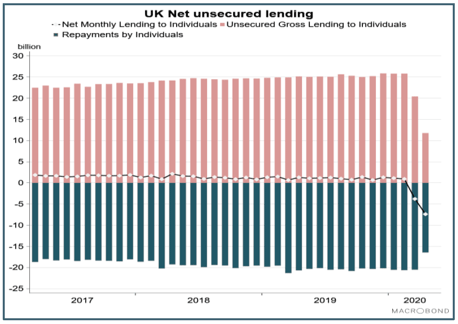
- The fall in consumer spending in April amid lockdown, has contributed to a sharp fall in UK net unsecured lending.
- Gross lending to consumers fell to £11.8 billion in April, almost half its level than at the start of the year, while repayments on credit cards and other loans also fell in April (by 19%).
- Overall the level of gross lending to consumers in April was more than offset by the level of repayment and net unsecured lending to households fell by £7.4 billion over the month.
Retail Sales
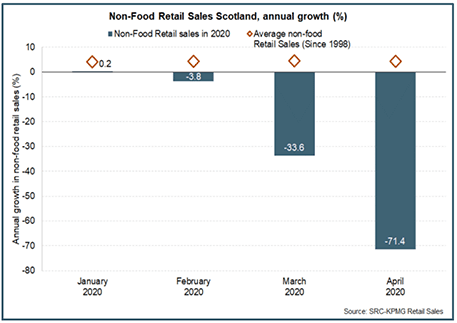
- Scottish Retail Consortium data[13] on retail sales for April reported an annual decrease of 40.3% in total retail sales in Scotland; its biggest fall on record.
- The decline in retail sales in April was mainly driven by a fall in non-food retail sales. Over the year to April, non-food retail sales fell by 71.4%, while food retail sales fell by 2.3%.
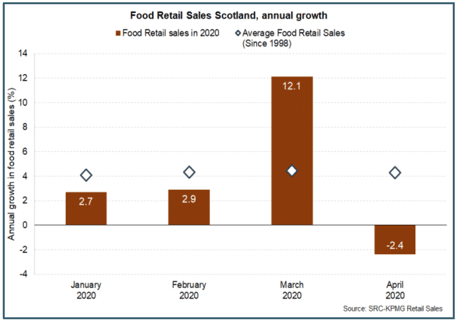
- The fall in food retail sales in April likely reflects the unwinding of stockpiling undertaken in March, however the combination of lockdown measures, increased pressure on incomes and weaker sentiment are likely impacting the overall fall in retail sales.
Inflation and Interest Rates
- The fall in demand, alongside the fall in oil price to record lows has placed downward pressure on inflation at the start of 2020.
- The Consumer Prices Index including owner occupiers' housing costs (CPIH) 12-month inflation rate was 0.9% in April 2020, down from 1.5% in March 2020.
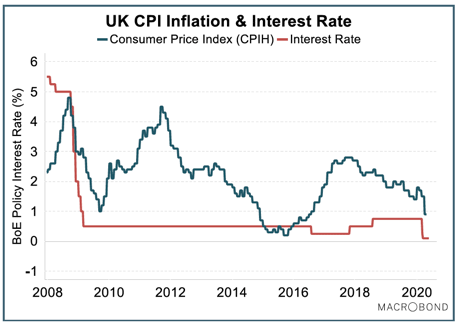
- Key downward contributions to the rate came from falling energy and fuel pump prices. The largest offsetting upward contributions came from a rise in recreational goods.
- The Bank of England reduced the Bank Rate to 0.1% in March 2020 and in their current central scenario analysis project inflation to fall to 0.6% in 2020 and 0.5% in 2021 before picking up to target at 2.0% in 2022.
Contact
Email: OCEABusiness@gov.scot
There is a problem
Thanks for your feedback